How Writing Turns Viewers into Collectors
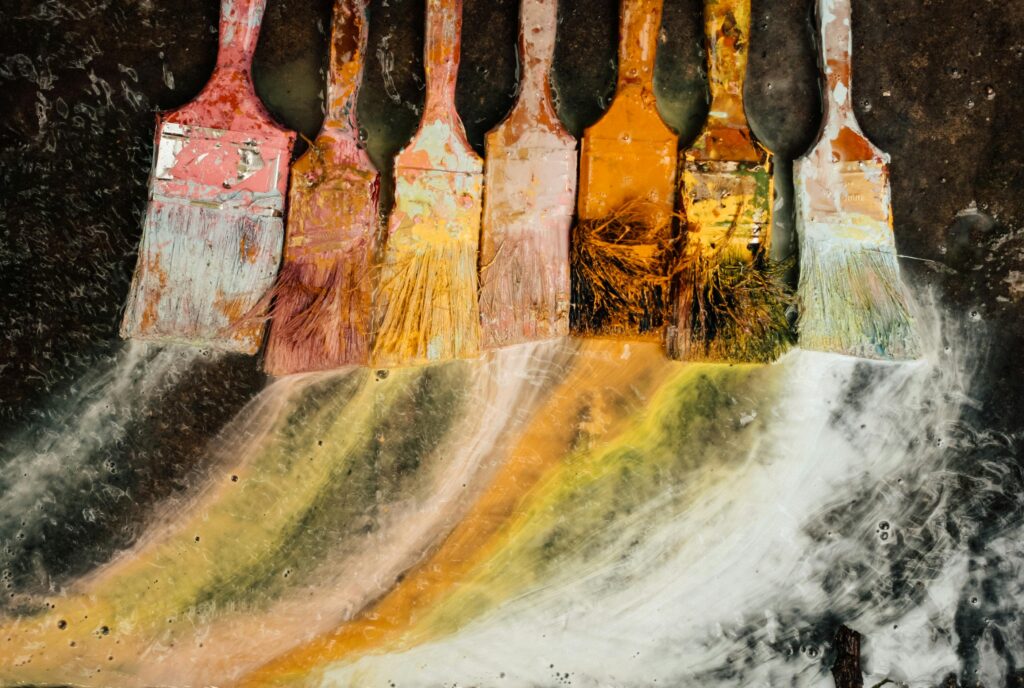
Ever heard the saying “Your art speaks for itself”? It sounds nice, but anyone who’s tried to get their work seen knows that words matter too. The way you describe your process, the stories you tell, even the short lines on your website, they all help people understand what they’re looking at. Writing quietly shapes how your art moves through the world, whether you notice it or not.
Most artists treat writing like a chore at first, something you do because the application asks for it. But after a while, it starts to feel like a mirror. You begin to see patterns, themes, ideas you didn’t realize were there. Sometimes, the right sentence helps you see your own work more clearly than a finished piece does.
Think about the last time you read an exhibition statement or an artist bio that really stayed with you. It wasn’t because the words were perfect, but because they felt honest and specific. That’s what strategic writing does , it creates a point of connection between your work and whoever’s on the other side.
Every artist already writes more than they realize. A caption, a title, a quick email about your latest project , those are all moments of translation. The difference comes from doing it with care, using words that match the tone and rhythm of your art instead of fighting against it.
When your writing feels aligned with your work, it opens quiet opportunities. A juror reads a line that sticks. A curator finally understands the thread that ties your projects together. A potential collaborator feels drawn in. Those small shifts add up to big moments.
In time, your writing becomes part of your artistic fingerprint. It’s not decoration or marketing, it’s an extension of your practice. When you find your voice on the page, people start to see your work with new clarity , and more often than not, they remember it.
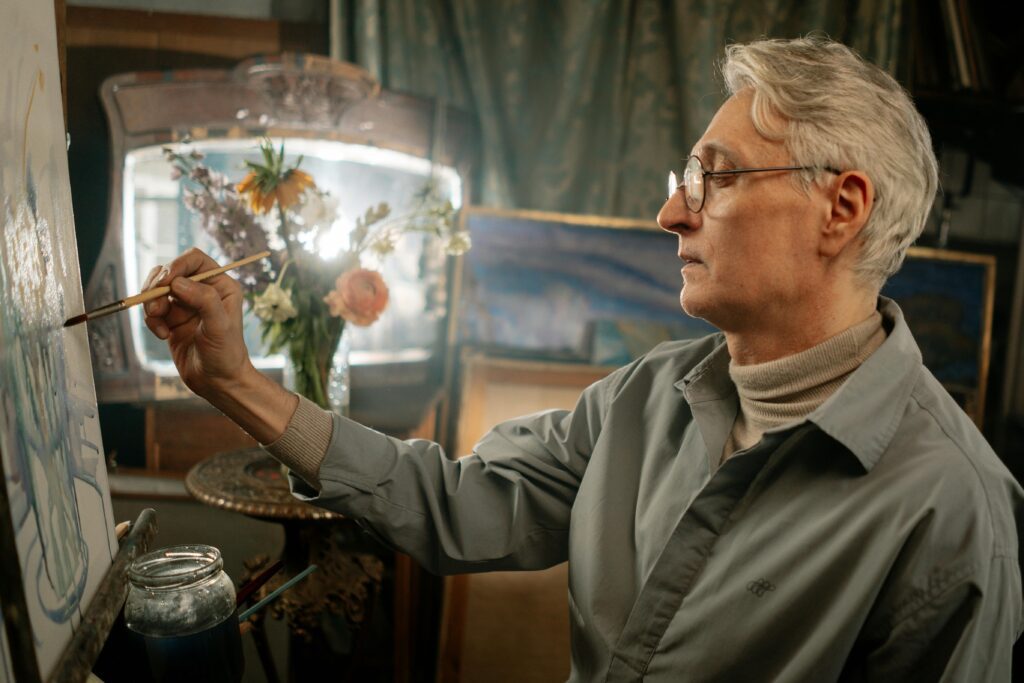
Why Artists Need Words That Work as Hard as Their Art
Visual work feels powerful because it bypasses language , but the art world itself runs on words. From grant applications to proposals, everything that moves your work forward asks you to write. The problem isn’t that artists can’t write, it’s that they’re rarely shown how to write strategically, in a way that represents their practice without flattening it.
A good statement doesn’t explain the magic away. It gives people a way in. The reader should walk away with a sense of how your mind works, not just what your art looks like. This is where many artists struggle, trying to sound “professional” instead of genuine, or filling space with theory that doesn’t feel like them.
The best writing often comes from the same place as the best art: observation. When you describe what actually happens in your studio , the choices, the chaos, the rhythm of your process , the words start to sound real. That realness is magnetic.
Writing strategically means being aware of the context. Who’s reading this? What are they hoping to understand? You don’t need to write what they want to hear, but you do need to make your message clear enough to reach them.
Some artists call this kind of writing “translation.” You’re translating the sensory, visual, emotional world of your art into language that helps someone else feel it too. The closer that translation comes to your truth, the stronger your connection becomes.
And that’s what strategic writing really does: it keeps your art from being misunderstood. It gives people fewer chances to dismiss or misread it. That clarity becomes part of your power.
The Hidden Skill Every Emerging Artist Builds Without Realizing
Every artist who’s ever written a caption, explained their concept to a friend, or introduced their work at a group show has already started learning strategic writing. You don’t need an MFA in literature to communicate meaningfully about your art , you just need to notice the moments where your words land.
Pay attention to how people respond when you talk about your work. Which phrases make them lean in? Which details confuse them? That feedback loop, if you start listening to it, teaches you more about communication than any workshop ever could.
Strategic writing isn’t about dressing up your art in jargon. It’s about tuning into what naturally clicks for others and finding a way to write that still feels like you. When your writing carries the same tone as your practice, readers can sense the alignment.
Over time, this kind of awareness turns into confidence. You stop dreading the “describe your work in 250 words” box because you know how to approach it. You know how to bring the reader closer instead of pushing them away with abstract language.
Think of writing as part of your creative growth, not a chore you endure. The more you do it, the more your voice evolves alongside your visual work. They start informing each other.
That’s the hidden skill most artists underestimate , the ability to communicate your essence clearly, even when you’re not in the room to explain it.
Writing as a Tool for Clarity, Not Just Communication
Writing forces you to slow down. When you try to describe your art, you end up noticing things you usually skim past , recurring symbols, emotional shifts, even color choices that reflect deeper instincts. It becomes a quiet diagnostic tool for your practice.
Clarity doesn’t mean simplifying your ideas; it means understanding them better. You can’t write strategically without first pausing to see what’s really happening in your work. That process can surprise you. Sometimes, your writing reveals that your current direction isn’t the one you meant to take.
Many artists say their statements feel awkward because they don’t yet know how to put their work into words. But the act of writing itself helps bridge that gap. The first few drafts are rarely perfect, yet they often expose patterns worth keeping.
Strategic writing also creates distance , the good kind. It lets you see your art from the outside for a moment. That perspective helps you identify what connects your pieces over time, what themes keep resurfacing, and how your visual language is evolving.
This awareness doesn’t just make your writing stronger; it makes your future work more intentional. The insights that surface through writing quietly feed back into your studio process.
That’s the secret benefit: writing strategically about your art helps you understand your own growth long before anyone else does.
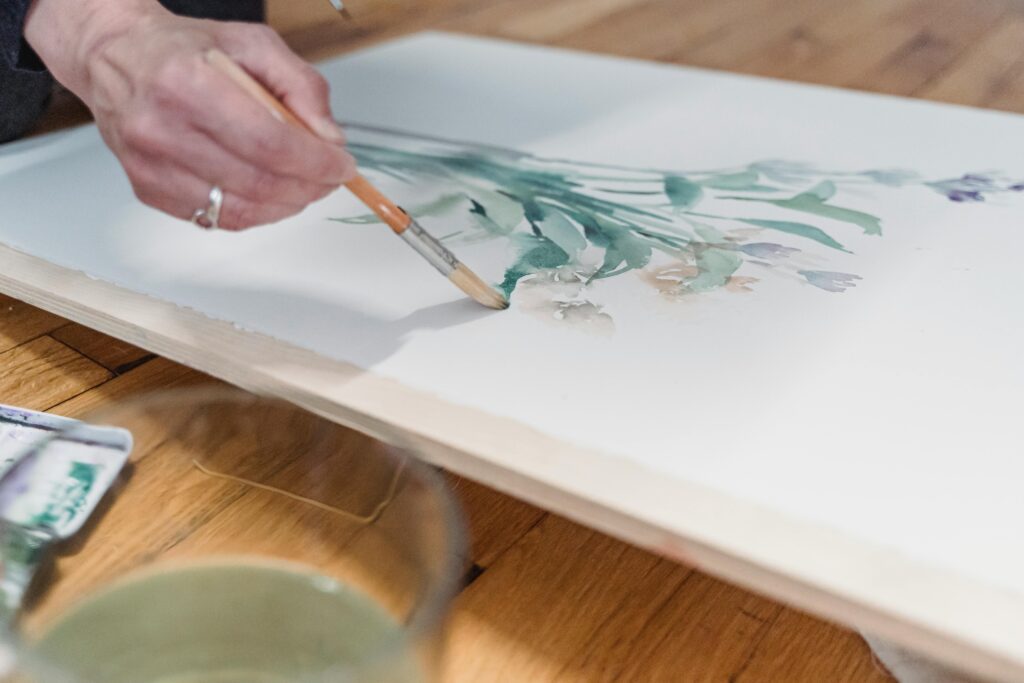
The Art of Sounding Like Yourself on the Page
The hardest part about artist writing is tone. Too formal, and it sounds stiff. Too casual, and it sounds like you don’t care. Finding your voice means writing the way you speak when you’re at your most honest , not rehearsed, not trying too hard to impress.
Start small. Write as if you’re explaining your work to a curious friend. What would you actually say out loud? Most artists notice that the words they use in conversation feel truer than what they write in an “official” document. Use that natural rhythm as your foundation.
It also helps to read your writing out loud. If it sounds like something you’d never actually say, rework it until it does. The goal isn’t to sound polished; it’s to sound real. Authenticity always cuts through.
Your voice should carry the texture of your practice. If your work is bold and playful, your writing shouldn’t feel like a museum placard. If your art is quiet and meditative, your words should echo that calm. This kind of alignment builds trust with your readers.
People don’t just connect with clarity, they connect with sincerity. When your writing feels grounded and unforced, it invites empathy , and curiosity. That’s when your work starts resonating beyond the image.
Sounding like yourself takes time, but once you find that tone, everything from statements to proposals becomes easier. You stop writing what you think others want and start writing what’s true.
Why Strategic Writing Isn’t Just for Applications
Most artists think about writing only when they’re applying for something , a grant, a residency, an exhibition. But strategic writing goes far beyond forms and deadlines. It’s how you shape the story of your practice over time.
Your website bio, project descriptions, even short captions all build a narrative around your work. When written with care, they help others see not just what you create, but why. That consistency helps curators, collaborators, and collectors understand where you’re headed.
Think of your writing as part of your professional architecture. It holds your public presence together. Each piece of writing becomes a point of reference that reflects your evolution , your changing themes, your new materials, your shifting ideas.
When you treat writing as a continuous habit instead of an occasional task, it becomes lighter, easier. You don’t have to reinvent your tone every few months. You just refine what’s already there.
Strategic writing gives you long-term stability in a field that often feels unpredictable. It lets your career tell a coherent story, one piece of text at a time.
And over the years, that clarity pays off in unexpected ways , more aligned opportunities, deeper collaborations, and fewer misunderstandings about your work.
Turning Your Words into Momentum
Good writing doesn’t just describe, it propels. When your words have direction, they move your art career forward , even when you’re not actively promoting yourself. A strong statement can linger in someone’s mind long after they’ve closed the tab.
Momentum comes from consistency. Updating your bio, reflecting on new projects, keeping notes on what drives your current work , all of this keeps your writing fresh and aligned with your growth. It’s how you stay visible and coherent in an ever-changing field.
Your writing can also open doors you didn’t plan for. Maybe a curator reads your blog and invites you to speak. Maybe a residency director connects with your phrasing and sees potential. Language, when intentional, has reach.
The goal isn’t to sound impressive. It’s to sound present , aware of where you are, what you’re exploring, and where you might go next. Strategic writing turns that awareness into a quiet kind of progress.
In a way, every word you write plants a seed for future visibility. You never know which one will take root. That’s why consistency matters more than perfection.
Over time, you’ll look back and realize your words were building a parallel body of work , one that supported your art, reflected your evolution, and kept your career moving forward, one sentence at a time.
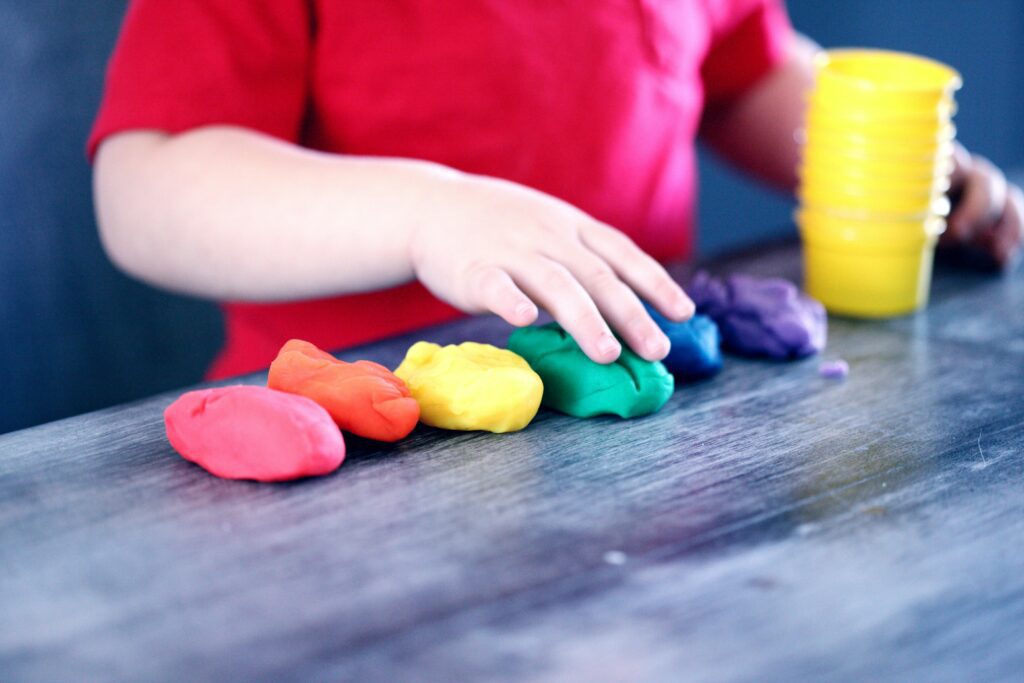
How Writing Shapes the Way Others See Your Work
People don’t just experience your art visually, they experience it through context. The words you use set the emotional and intellectual temperature of that experience. A single sentence can change how someone perceives your entire body of work.
Imagine two artists describing similar pieces , one writes, “I explore memory,” and the other says, “I work with objects that outlast their owners, tracing the quiet ways time leaves a mark.” The second artist immediately paints a world with language. That difference in specificity builds connection and intrigue.
Strategic writing teaches you to guide interpretation without controlling it. You offer a lens, not a lecture. The reader gets enough to feel oriented, but still enough space to bring their own meaning. That’s a delicate balance, but it’s where engagement happens.
Your writing also shows your level of reflection. Curators and jurors can sense when you’ve thought deeply about your process, when your choices are intentional. That awareness doesn’t make your work less emotional , it makes it legible in a way that feels alive.
Over time, your words become part of your reputation. They show that you not only make art, but also think critically about it. That dual fluency builds trust in professional spaces where context matters as much as creativity.
And once people start to trust your words, they start to trust your work , even before they’ve seen it in person.
The Small Writings That Quietly Build Your Career
The most impactful pieces of writing in your career often aren’t the long statements or formal essays. They’re the short, everyday moments , the project captions, the artist talks, the follow-up emails that hold warmth and precision. Those are the words people remember.
Each small piece of writing carries your tone. When you write with care, even in casual moments, you create a recognizable consistency. It tells people who you are long before you meet them. That subtle cohesion builds credibility.
Think about social media posts, or even the way you describe your work in messages. These little fragments slowly construct your narrative. They create breadcrumbs that help others understand your artistic identity without needing a long explanation.
The key is intention. You don’t have to write long; you just have to write true. A short, thoughtful sentence about your process or mood can often say more than a polished press release.
When you treat small writings as extensions of your practice, they stop feeling like chores. They become part of your rhythm, another material you shape.
Those small moments of language accumulate quietly, and before you realize it, you’ve built a written archive of your evolution , an honest map of where you’ve been and where you’re headed.
Strategic Writing as a Studio Practice
Writing doesn’t only belong at your desk; it belongs in your studio too. When you jot down ideas, fragments, or observations as you work, those notes often reveal what your art is trying to say before you can see it visually.
Many artists keep notebooks or digital logs without realizing how valuable they are. Those scraps become early drafts of statements, proposals, and future projects. Strategic writing starts in those messy, private pages long before it ever becomes public.
Writing in the studio also trains your mind to articulate process. Instead of saying “I just felt it,” you start recognizing the decisions and instincts behind each move. That kind of awareness deepens your relationship with your materials and themes.
It can also save you during deadlines. When you have months of honest notes, your next application doesn’t feel like starting from zero. You already have language that grew directly from your practice.
The studio becomes both laboratory and language workshop , a place where words and visuals evolve together. You begin to see writing not as something separate, but as part of your creative rhythm.
That integration is what gives your future writing depth. It’s grounded in lived process, not forced at the last minute.

Finding the Right Words When You’re Too Close to Your Work
Every artist has moments when their own work feels too familiar to describe. You’ve stared at it for weeks, lived inside its decisions, and by the time you need to write, your mind goes blank. That’s normal , proximity blurs perspective.
When that happens, step back. Try describing your work as if it belonged to someone else. What themes would you notice? What emotions does it evoke? Sometimes pretending to be an observer gives you the distance you need to see clearly again.
Another trick is to ask someone you trust to describe what they see. Listen to the words they use. You don’t have to agree with all of them, but their language might reveal angles you hadn’t considered. Those external perceptions often become the missing vocabulary you were searching for.
You can also look through your past writings , proposals, statements, or even old notes. You might find phrases that still resonate. Editing old language into something new is often easier than starting from a blank page.
Clarity often returns once you give yourself permission to not be “perfect.” Write freely, even if it sounds clumsy at first. Revision will handle the rest.
Strategic writing isn’t about knowing the right words all the time. It’s about building habits that help you find them when you need them most.
How to Keep Your Writing Honest When You Start Getting Attention
As your career grows, the pressure to sound a certain way creeps in. Suddenly you’re aware of who’s reading , curators, collectors, institutions , and your writing starts to shift to please them. That’s the moment to pause.
The most compelling artist writing doesn’t chase approval; it holds its center. Readers can tell when your tone is grounded and when it’s been edited to sound impressive. Authenticity is the quiet confidence that keeps your words believable.
One way to stay honest is to write for your future self, not for an imagined audience. What do you want your words to remind you of later? What truth about your work do you never want to lose? Writing from that place keeps you steady even when the audience changes.
You can still evolve your tone, refine your clarity, and adapt to context without losing your voice. The balance is found in intention: adjusting for understanding, not approval.
Every successful artist eventually learns that language can open doors, but only if it still sounds like them. Readers remember sincerity, not polish.
The more attention you receive, the more important it becomes to protect the authenticity of your language , because it’s one of the few things that still belongs entirely to you.
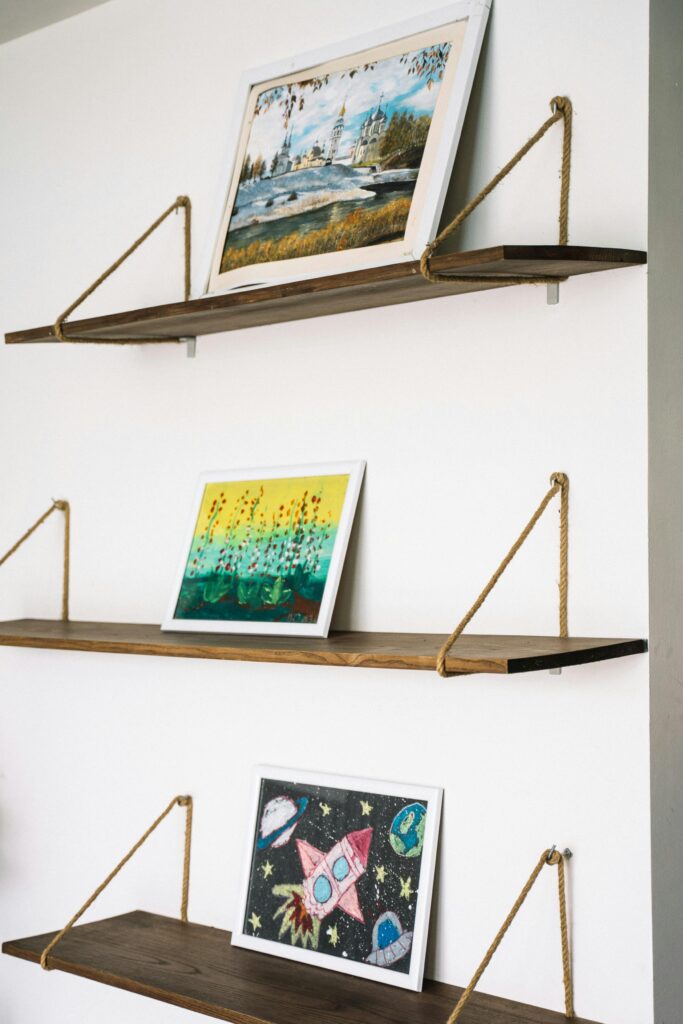
Building a Career Through Language and Art
Art careers are often described in milestones , exhibitions, residencies, awards. But beneath all those moments runs a quieter thread: the words that carried your work there. Writing doesn’t just document your career, it helps sustain it.
The artists who last the longest aren’t always the loudest or most prolific. They’re the ones who know how to communicate what they do, with clarity and continuity, across years of growth and change. Strategic writing gives them that stability.
When you start treating language as part of your long-term practice, you stop separating “making” and “describing.” Both become part of the same ecosystem. Your writing grows alongside your art, reflecting your evolution instead of chasing it.
This kind of consistency builds legacy. Future curators, students, and collaborators will understand your work because you left a trail of words that frame it in your own terms. That’s a kind of authorship that goes beyond visuals.
The long game of writing isn’t about perfection; it’s about patience. It’s knowing that every artist statement, caption, and proposal adds to your larger story.
And one day, when someone looks back on your career, those words will reveal the through-line , not just of your art, but of the person who made it.
